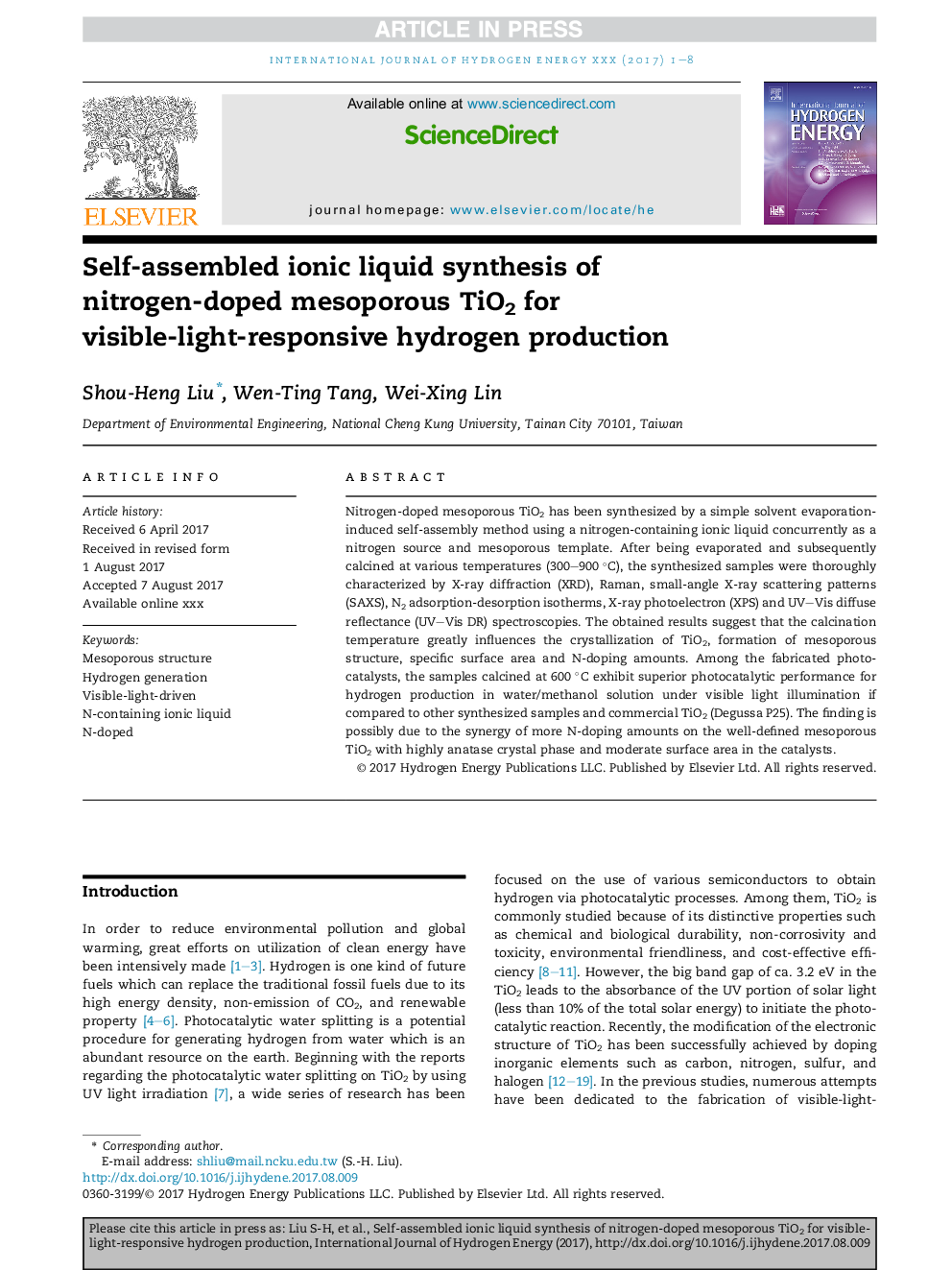| Article ID | Journal | Published Year | Pages | File Type |
|---|---|---|---|---|
| 5145190 | International Journal of Hydrogen Energy | 2017 | 8 Pages |
Abstract
Nitrogen-doped mesoporous TiO2 has been synthesized by a simple solvent evaporation-induced self-assembly method using a nitrogen-containing ionic liquid concurrently as a nitrogen source and mesoporous template. After being evaporated and subsequently calcined at various temperatures (300-900 °C), the synthesized samples were thoroughly characterized by X-ray diffraction (XRD), Raman, small-angle X-ray scattering patterns (SAXS), N2 adsorption-desorption isotherms, X-ray photoelectron (XPS) and UV-Vis diffuse reflectance (UV-Vis DR) spectroscopies. The obtained results suggest that the calcination temperature greatly influences the crystallization of TiO2, formation of mesoporous structure, specific surface area and N-doping amounts. Among the fabricated photocatalysts, the samples calcined at 600 °C exhibit superior photocatalytic performance for hydrogen production in water/methanol solution under visible light illumination if compared to other synthesized samples and commercial TiO2 (Degussa P25). The finding is possibly due to the synergy of more N-doping amounts on the well-defined mesoporous TiO2 with highly anatase crystal phase and moderate surface area in the catalysts.
Related Topics
Physical Sciences and Engineering
Chemistry
Electrochemistry
Authors
Shou-Heng Liu, Wen-Ting Tang, Wei-Xing Lin,
